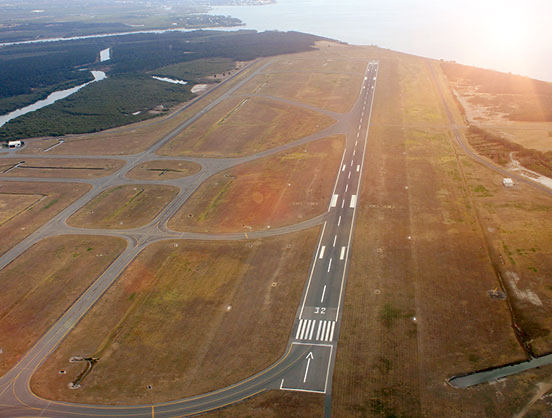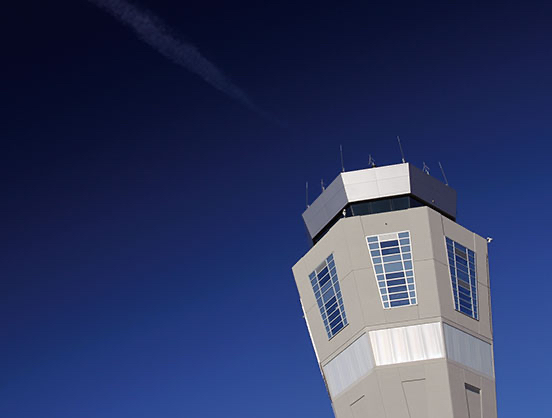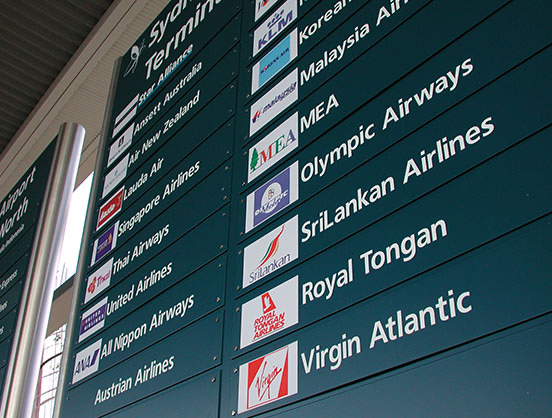Overview
About ATFM
Air Traffic Flow Management (ATFM) is a service provided by Airservices Australia aimed at achieving a balance between forecast air traffic capacity and actual air traffic demand.
ATFM identifies and manages demand and capacity imbalances, both at airports and in airspace volumes. Where imbalances are identified, ATFM enables the implementation of ATFM Measures to reduce airborne delays.
This is called the Ground Delay Program (GDP) and run for Melbourne, Sydney, Brisbane and Perth airports.

Software
Harmony
The Ground Delay Program is run through the software based tool Harmony which monitors demand and capacity across the network and then is used to implement ATFM Measures when demand exceeds capacity.
Aircraft operators are able to interface with Harmony using the Harmony Web Client, Harmony for airlines (using the Enhanced Substitution Module (ESM)) or Harmony for ANSPs client.
During the hours of operation of a Ground Delay Program, aircraft operators are able to manage and optimise their fleet’s operation using the Harmony Web Client connecting via the internet. This tool enables aircraft operators to swap landing slots internally using the Slot Substitution functionality and to advertise for external swaps using the Inter Aircraft Operator Slot Exchange (ISE) functionality. Once proposed changes have been made, the aircraft operators submit them to the Harmony server. The Harmony server responds automatically and displays the results on the Web client.
Airport operators and other approved aviation community members are able to access Harmony Web Client in a read only format.
Real-time updates
How Harmony works
Harmony accepts real-time updates to schedule data, either via flight plan submission, airline day of operations changes to scheduled departure times, or ATC live data. As a consequence of accepting real-time updates, Harmony is able to display the most up-to-date demand/capacity information for any monitored airport, which in turn provides airlines, airports and ATC with an enhanced capability to predict traffic management issues. To maximise the capabilities of Harmony, it is important that all airspace users update their schedules on “day of operations” as soon as schedule changes become known.
All airlines intending to operate into a GDP airport (Melbourne, Sydney, Brisbane and Perth) are required to submit operating details into the Harmony system. Airlines upload a schedule directly into a web based interface, and smaller operators contact the Network Coordination Centre (NCC) who will enter their details into the system.
Aircraft and airport operators can view the GDP information for affected flights via web based access to the Harmony tool. User login to this service is managed by Airservices.

ATC
Compliance management
The established ATFM concept of operations and business rules acknowledge the importance of compliance with an established GDP to ensure optimum efficiency and balanced distribution of delays for all stakeholders. It is also acknowledged that, at times, there may be a need for flights to intentionally not comply with an assigned delay on the ground and absorb any remaining delay airborne (due to gate restrictions, etc.).
To ensure the balanced distribution of delays, GDP information will be made available to both Tower Air Traffic Control (ATC) positions and destination airport Flow Management positions.
This information will be used by ATC to advise flights when they are not complying with the GDP and, if necessary, take action to ensure compliant flights are not unfairly delayed by non-compliant flights. This will normally take the form of delaying non-compliant flights at the departure airport or during the en route or arrival phase of the flight.
More information on ATFM and GDPs is located in AIP ENR 1.9 and ERSA entries for Sydney, Brisbane, Melbourne and Perth Airports.

Aircraft operators
Requirements
Aircraft Operators who operate a combined total of more than five regular flights per day into Sydney, Brisbane, Melbourne or Perth are required to have interactive access to Harmony.
Each operator will, on a daily basis, be required to upload their schedules, as well as tactically manage their fleet to ensure the optimum usage of available landing slots at all airports subject to the Ground Delay Program (GDP).
Pilots of unscheduled flights planning to operate into Sydney, Brisbane, Melbourne or Perth during the hours of a GDP are required to call the NCC on 1800 020 626, and Airport Coordination Australia (ACA) 02 9313 5469 as appropriate prior to their flight to obtain a Calculated Off Blocks Time (COBT) for their departure. Refer to ATFM Pilot Briefing Paper Version 5 and Guide for Operations through Airports Subject to Slot Scheme and Ground Delay Programs for more information on this process.
Airport operators will be assigned read only access to Harmony providing arrival and departure information for aircraft operating into and out of their airport.
Web client access
Participants and Applications Process
Harmony web client access is provided to the following groups of users.
- Aircraft Operators of regular services into Sydney, Brisbane, Melbourne and Perth airports
- Airport Operators whose airport has regular services into Sydney, Brisbane, Melbourne and Perth airports
- Other aviation groups who demonstrate a legitimate requirement for access.
Application for access to Harmony shall commence by providing limited details to atfmu@airservicesaustralia.com, and shall include the following details:
- Company name
- Applicants full name and title
- Phone number
- Justification of requirement for Access.
Further information may be requested by the ATFM Operational Authority.
After initial review the following two documents will be forwarded for completion:
- ATFM System Access User Guide
- CDM Data Sharing Agreement
The registration form at the rear of the User Guide and the CDM Data Sharing Agreement must be completed and signed before system access is granted.
Training shall be provided to aircraft operators by Airservices. Once this is completed and the aircraft operator has confirmed their company has completed in house training, access to the operational system shall be granted.
Once system access is granted, logins, passwords and the URL for access to Harmony shall be forwarded by the ATFM operational authority.

Further information is available from
Work with us
Airservices is at the forefront of Australian aviation. We are uniquely connected to all parts of the industry and offer exciting and innovative work across a range of operational and corporate roles.
Career paths on offer at Airservices include air traffic control, aviation rescue fire fighting, information technology, corporate support and more.